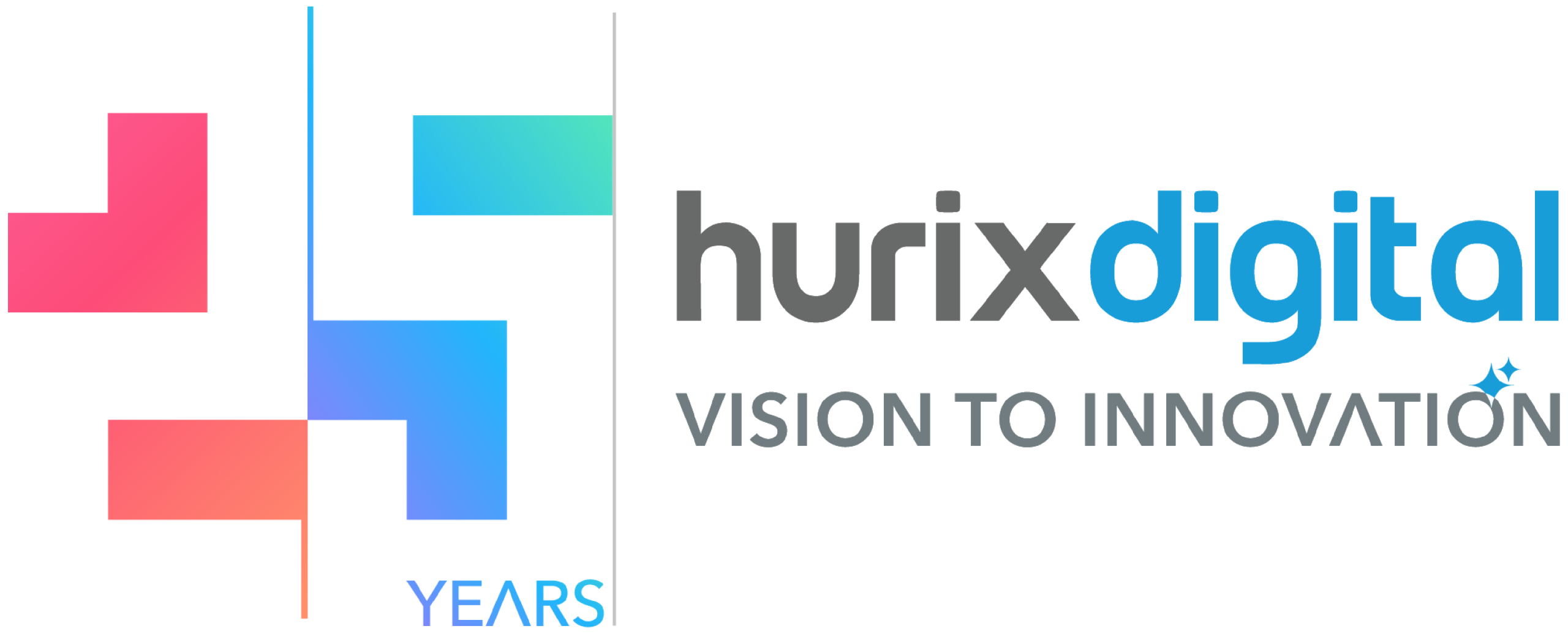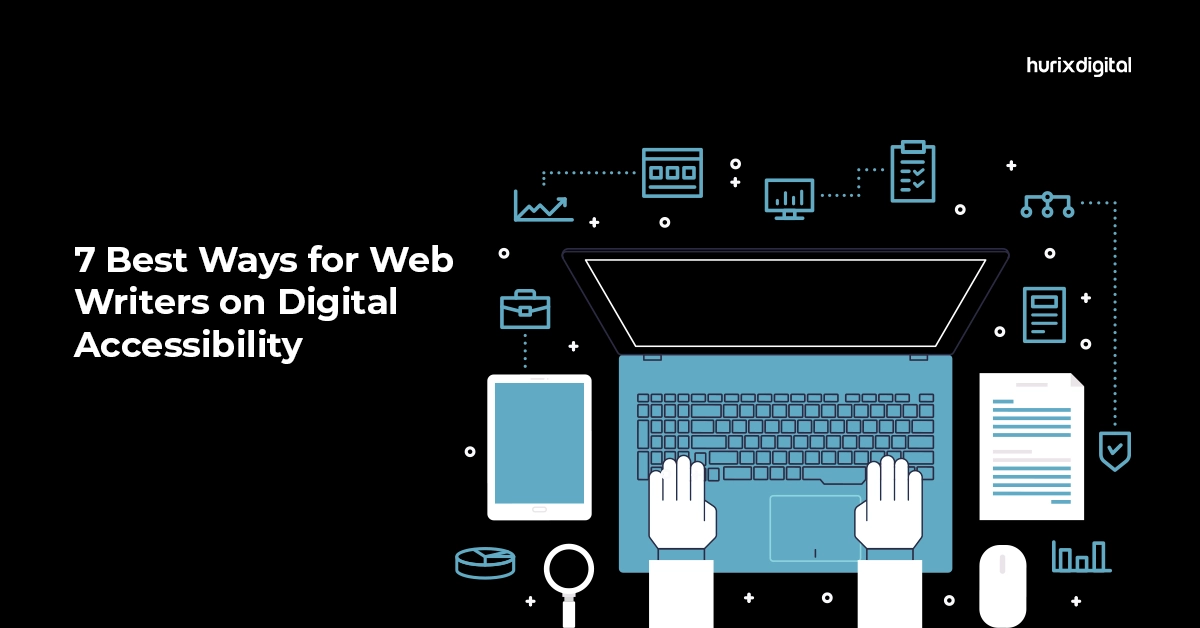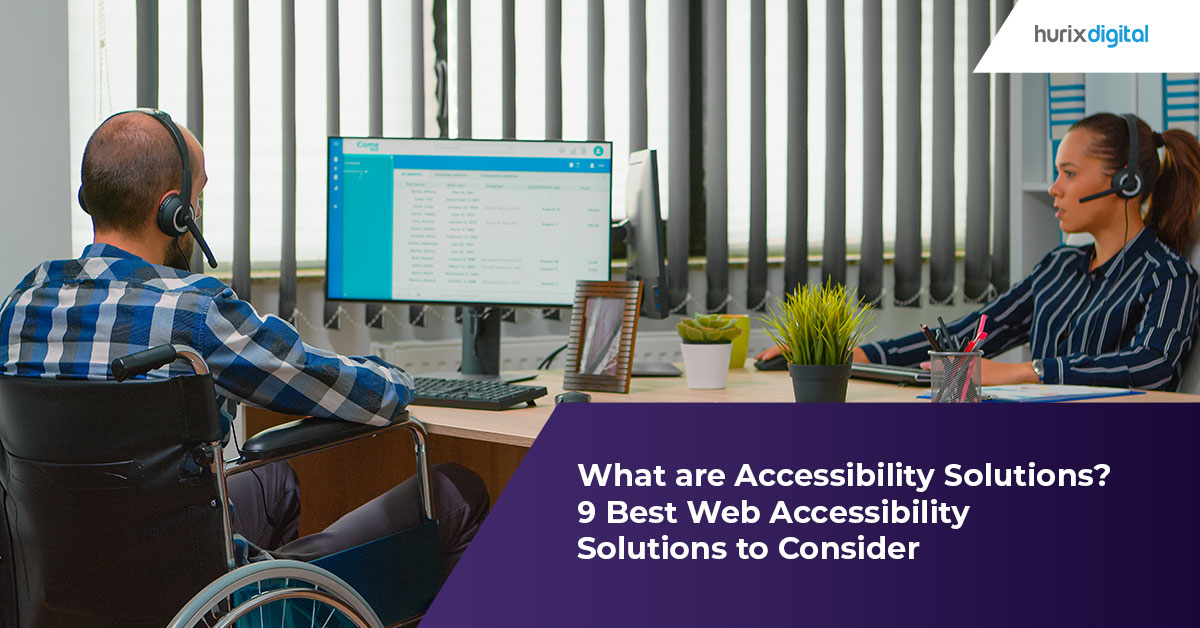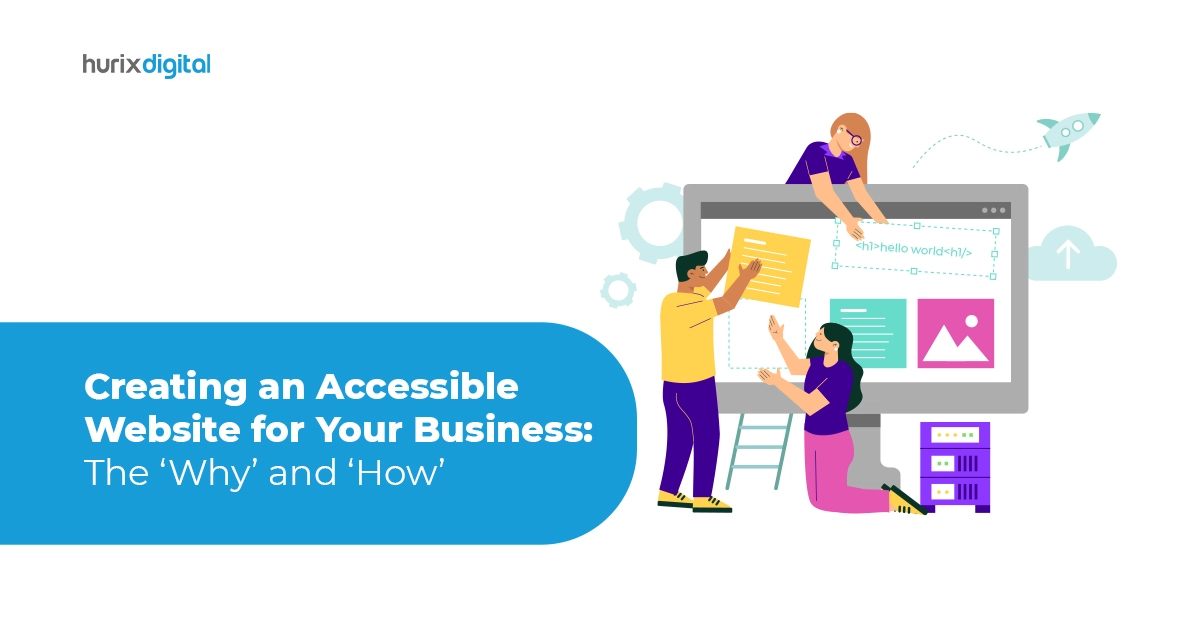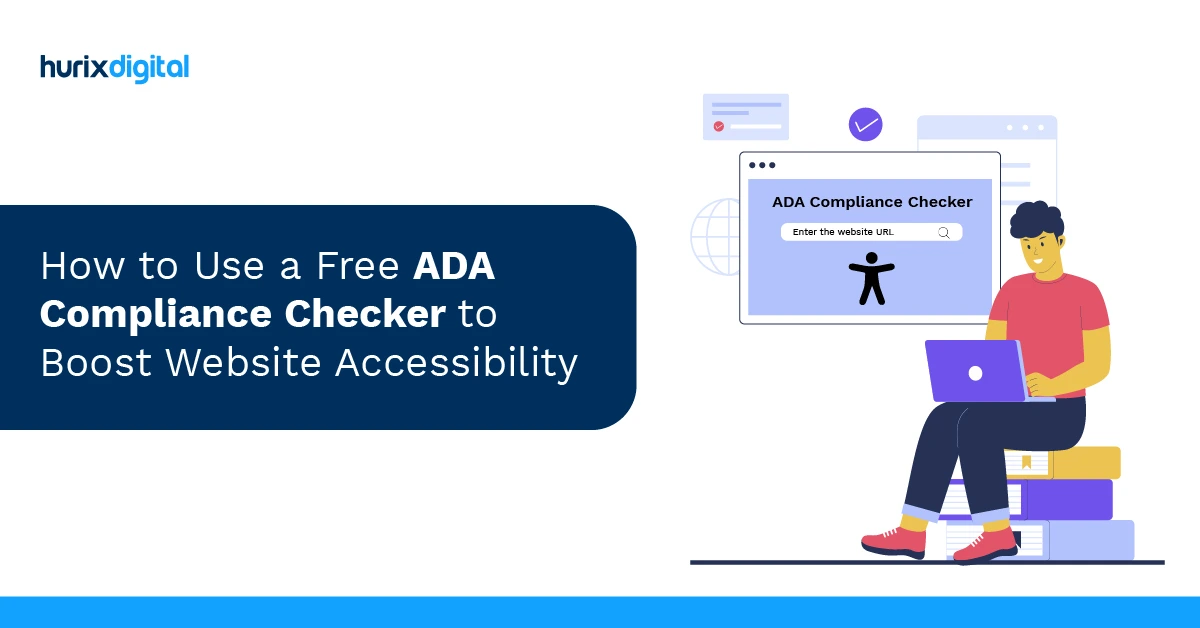
How to Use a Free ADA Compliance Checker to Boost Website Accessibility
Summarize with:
Picture this: A senior executive sits across the table, coffee getting cold, staring at a lawsuit notice—another accessibility complaint. The irony? Just last month, they ran their website through three different free ADA checkers—all green lights—all clear, supposedly.
The consequences of failing to comply with the Americans with Disabilities Act (ADA) or Web Content Accessibility Guidelines (WCAG) are enormous for CXOs, including lawsuits, risk to reputation, and loss of revenue. Free checking tools for ADA compliance are often offered with an assurance of quantifying accessibility quickly and cheaply, but are they reliable?
That’s why we’re diving deep into the reality of free ADA compliance checkers. In this blog, we’re going to unpack the limitations, explore the hidden risks, and ask the tough questions. Do they actually get it all? How frequently are they updated in tandem with the WCAG guideline update? And besides, more importantly, are they able to substitute the skills of an experienced accessibility auditor? Let’s cut through the noise and find out how to make your website accessible for real-world users, not just for checking compliance boxes.
Table of Contents:
- Are Free ADA Checkers Truly Accurate?
- What Are the Limitations of Free ADA Tools?
- Do Free Tools Cover All WCAG Guidelines?
- How Often Are Free Checkers Updated?
- What Data Privacy Risks Exist?
- Can Free Checkers Replace Expert Audits?
- How Do Free Tools Handle Dynamic Content?
- What’s the Best Way to Validate Checker Results?
- How to Select the Right Compliance Tool?
- What Resources Best Ensure Full Compliance?
- A Final Word
Are Free ADA Checkers Truly Accurate?
So, about those free ADA checkers… Are they really hitting the mark? Well, let’s be honest, it’s complicated. We have seen organizations getting excited with that “ALL CLEAR” from one of these free ADA checkers, only to find out the hard way that their website still wasn’t truly accessible.
Think of it like this: a spell checker can catch typos, but it won’t tell you if your writing actually makes sense. Free ADA checkers are similar. They’re pretty good at spotting some basic technical issues—missing alt text on images, for instance, or headings that aren’t nested correctly. Things that are coded. But accessibility is not about catching these simple flaws.
It’s about the experience of someone with a disability. Can a person dependent on a screen reader able to navigate your website smoothly? Is the color contrast sufficient for folks with low vision? Does your site respond as expected when someone uses keyboard navigation instead of a mouse? These things are really difficult for an automated tool to fully understand and assess.
What Are the Limitations of Free ADA Tools?
Free tools come with invisible boundaries that most users discover only after problems arise. Let’s talk in detail about four specific limitations of these free ADA tools:
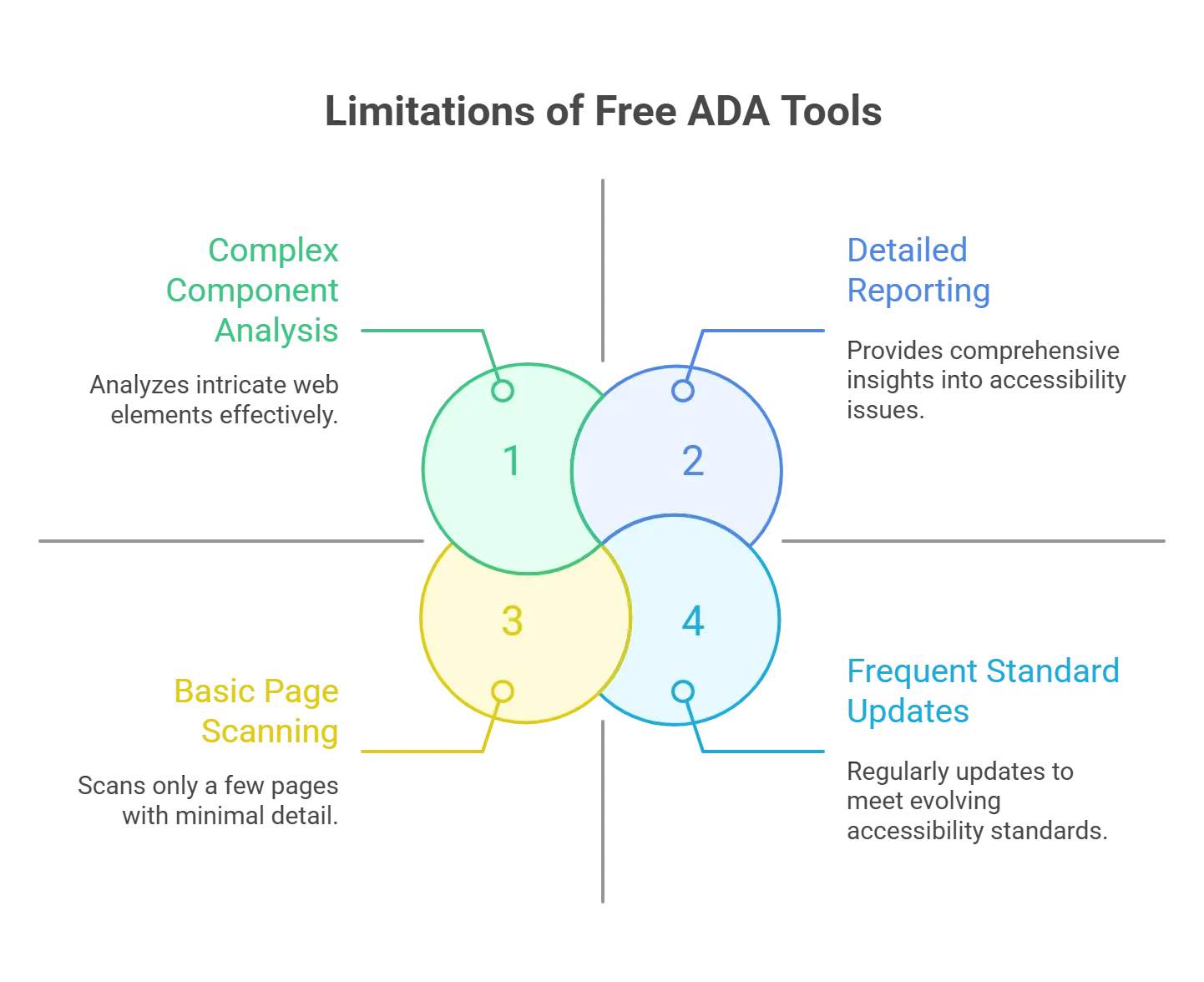
1. Scope of Page Analysis
Page limits hit first. Most free checkers scan only a handful of pages. For a corporate website with hundreds of pages, multiple subdomains, and dynamic content, that’s like checking building safety by inspecting only the lobby. A client of ours learned this the hard way when their free tool gave their homepage a perfect score but left the job application portal unchecked, making it completely inaccessible to those using screen readers.
2. Frequency of Standard Updates
Then there’s the update frequency problem. Web accessibility standards evolve. WCAG 2.1 added mobile accessibility criteria that didn’t exist in WCAG 2.0. When WCAG 2.2 arrived with new focus and appearance requirements, many free tools took months to incorporate these changes. By the time they revised, early adopters had already experienced compliance gaps.
3. Challenges in Reporting
Reporting presents another challenge. Free tools typically offer basic pass/fail results. A red cross mark next to “Images” doesn’t tell you which of your 500 product photos lack proper descriptions or which ones need detailed alt text instead of decorative labels.
4. Depth of Technical Analysis
Technical depth matters too. Free checkers often skip complex components—think custom dropdowns, single-page applications, or interactive data visualizations. They’ll check if your static HTML has proper markup, but might completely miss that your React components break keyboard navigation.
Perhaps most critically, free tools rarely explain the “why” behind failures. They’ll flag an error but won’t explain how it impacts real users or suggest practical fixes that make business sense.
Do Free Tools Cover All WCAG Guidelines?
Short answer: no. Long answer: it’s complicated in ways that matter for compliance. WCAG contains four main principles, better known as POUR:
- Perceivable
- Operable
- Understandable
- Robust
Within these sit 13 guidelines and 78 success criteria (for WCAG 2.1 Level AA). Free tools fail to cover even half of these criteria.
Take Guideline 2.4.6: Headings and Labels. A free checker verifies that headings exist and follow a proper hierarchy. But it can’t determine if your heading “Products” adequately describes a section containing both software and services. Human judgment is required.
Or consider 3.3.2: Labels or Instructions. The tool confirms that form fields have labels. Great. But does “Enter your ID” clearly indicate whether users need their employee, customer, or government ID? The checker can’t evaluate clarity or context.
Simply put, WCAG is much deeper than just those surface-level issues. Conformance requires understanding the intent behind the guidelines and nuanced judgment. A free tool can’t tell much beyond a point to ensure accessibility for real-world users.
How Often Are Free Checkers Updated?
Update frequency varies wildly. This non-uniformity matters more than most organizations realize. Think of it like antivirus software. Yesterday’s definitions won’t catch today’s threats. Premium tools typically update within weeks of new WCAG releases or major browser changes. Free tools? Sometimes months, and a few bad ones—never. One popular free checker still uses WCAG 2.0 criteria from 2008, missing eleven years of accessibility evolution.
Browser updates create another layer. When Chrome changed how it handles focus indicators, sites that passed suddenly failed. Free tools running outdated validation rules kept showing false positives for months. One of our healthcare clients shared how they spent a lot of resources “fixing” issues that no longer existed, simply because their free checker hadn’t updated its Chrome compatibility rules.
Moreover, the update gap compounds over time. A tool that’s six months behind might miss critical security-related accessibility updates, new assistive technology compatibility requirements, or revised legal interpretations. For companies operating in highly regulated industries, these delays can trigger compliance failures that weren’t even violations when checked on these “free” tools.
What Data Privacy Risks Exist?
Free tools need access to scan your content. What happens to that data afterward raises privacy-related questions.
Many free checkers are notorious for storing scanned content on their servers. That may not seem concerning to many until they realize these tools have just cached your proprietary product descriptions, internal form structures, or pre-launch campaign pages.
Server location matters for regulatory compliance. That free checker might host data in countries with different privacy laws than yours. GDPR, CCPA, and HIPAA—each has specific requirements about where data resides and how it’s processed. One of our healthcare clients learned that their free accessibility checker stored patient form structures on servers that didn’t meet HIPAA requirements. No actual patient data leaked, but the form field names and structures alone triggered compliance violations.
Can Free Checkers Replace Expert Audits?
Let me tell you about two companies. Both ran accessibility checkers. Both got similar scores. One faced lawsuits; the other became an industry model for inclusion. The difference? How they interpreted and acted on those check results.
Expert audits bring context that machines can’t provide. An automated tool flags missing skip links. An expert explains that your specific navigation structure makes skip links critical for keyboard users who’d otherwise tab through 37 menu items to reach the main content. The tool reports a failure; the expert reports a frustrated user abandoning your site.
Furthermore, experts test with actual assistive technologies. They’ll navigate your site using JAWS, NVDA, VoiceOver, and Dragon NaturallySpeaking—experiencing what real users experience. One e-commerce site passed automated checks but failed expert review when screen readers announced every product price as “dollar sign undefined.” The HTML looked correct; the JavaScript rendering broke accessibility.
Legal interpretation adds another layer. Experts understand court precedents, settlement patterns, and enforcement trends. They know which technical failures trigger lawsuits and which get overlooked. More importantly, they understand the difference between minimal compliance and meaningful accessibility—a distinction that matters when facing legal scrutiny.
How Do Free Tools Handle Dynamic Content?
Modern websites aren’t static documents. They’re living applications with content that updates or responds to user interaction. Free checkers often evaluate these sites like someone judging a dynamic dance performance from a still photograph.
Single-page applications (SPAs) present particular challenges. Your React or Angular app might load a shell page that passes all checks, then dynamically inject content that breaks every accessibility rule. Free tools typically scan the initial page load only. They miss dropdown menus that appear on hover, modal dialogs triggered by user actions, or content loaded through infinite scroll.
Moreover, interactive components multiply the complexity. That sleek custom slider? The checker sees a div with proper ARIA labels. It doesn’t test whether keyboard users can actually adjust values or if screen readers announce changes. One of our banking clients learned this when customers couldn’t adjust the loan calculators despite “passing” accessibility scans on their app.
What’s the Best Way to Validate Checker Results?
Trust but verify—except here, start with verify. Smart organizations treat checker results as hypotheses requiring proof, not conclusions demanding action.
Manual testing starts with keyboard navigation. Unplug your mouse and try completing key tasks using only the keyboard. Can you reach every interactive element? Does the focus indication clearly show where you are? One CEO tried this with his e-commerce website and couldn’t complete a purchase. The checkers showed 94% compliance; actual usability suggested otherwise.
User testing with people who actually use assistive technologies provides ultimate validation. They’ll find issues no tool catches. Confusing instructions that technically meet guidelines. Navigation patterns that work but frustrate. Color combinations that pass contrast ratios but strain eyes in real-world lighting.
How to Select the Right Compliance Tool?
Choosing accessibility tools resembles assembling an investment portfolio. Diversification reduces risk, and being far too dependent on one tool makes you vulnerable.
Start with your actual needs, not tool features. A content-heavy publisher needs different capabilities than an e-commerce platform or SaaS application. List your critical user journeys. Identify your technology stack. Understand your compliance requirements. Then evaluate tools against these specific needs, not generic feature lists.
Think of your team’s technical capability. A tool with good detection rates but unreadable reports does nothing but assist anyone. Seek clarifications, practical suggestions, and educational materials. An effective tool will train your team members to not only detect problems but also avoid them.
The budget extends beyond subscription costs. Factor in training time, integration effort, and ongoing maintenance. That “free” tool might cost more in developer hours than a paid solution with better workflow integration. Calculate the total cost of ownership, including the risk cost of missed issues.
Scalability becomes critical as you grow. A tool that handles your current 50-page website might choke on next year’s 1000-page expansion. Check performance with your expected volume. Verify that API limits match your testing frequency. Ensure reporting scales to your stakeholder’s needs.
What Resources Best Ensure Full Compliance?
Compliance isn’t a destination—it’s more like maintaining fitness. No single workout makes you healthy. No single resource ensures accessibility.
Build a resource ecosystem. Start with authoritative sources: W3C’s WCAG documentation, WebAIM’s practical guides, and Section508.gov‘s technical standards. These provide the foundation. But reading specifications doesn’t equal understanding implementation.
Training investments pay handsome returns over time. Send your developers to accessibility workshops, bring in accessibility experts for team training, and create internal champions who spread knowledge.
Testing tools form part of the toolkit, not the entire solution. Combine automated scanners (free and paid), browser extensions for spot checks, screen readers for experience testing, and color contrast analyzers for design validation. Each tool catches different issues. Together, they create coverage.
A Final Word
Let’s be honest: free ADA compliance checkers are a bit like shining your phone’s flashlight while looking for clues in a huge mansion. You can see a few cobwebs in the corners, but most of the big problem areas stay in the dark. Throughout this blog, we’ve pointed out that these quick tools usually flag easy HTML mistakes yet skip over the deeper accessibility roadblocks that can lead to lawsuits. Short scan limits, older WCAG rules they haven’t kept up with, privacy worries, and a total blank on live or changing content—all of these gaps are too big for any business that takes accessibility and legal risk seriously.
Smart leaders recognize that true accessibility requires more than automated scans showing green checkmarks. It demands expertise that understands both technical requirements and human experience. When courts evaluate ADA compliance, they don’t ask what your free checker scored. They ask whether people with disabilities can actually use your digital properties. That’s where comprehensive accessibility solutions make the difference—combining advanced technology with human expertise, continuous monitoring with strategic guidance, and compliance checking with genuine inclusive design.
At Hurix Digital, we’ve guided countless organizations beyond the false security of free tools toward robust accessibility programs that protect against lawsuits while opening doors to millions of users. Our accessibility experts don’t just run scans; they partner with your team to build sustainable compliance strategies that evolve with standards and scale with growth. Ready to move beyond basic checks to real accessibility? Connect with our accessibility team to discover how we transform compliance challenges into competitive advantages.
Summarize with:

Vice President – Content Transformation at HurixDigital, based in Chennai. With nearly 20 years in digital content, he leads large-scale transformation and accessibility initiatives. A frequent presenter (e.g., London Book Fair 2025), Gokulnath drives AI-powered publishing solutions and inclusive content strategies for global clients
 Upcoming Masterclass | Build an Army of Brand Evangelists using Training & Development | November 20th, 8:30 AM PDT | 11:30 AM EDT | 10:00 PM IST
Upcoming Masterclass | Build an Army of Brand Evangelists using Training & Development | November 20th, 8:30 AM PDT | 11:30 AM EDT | 10:00 PM IST
